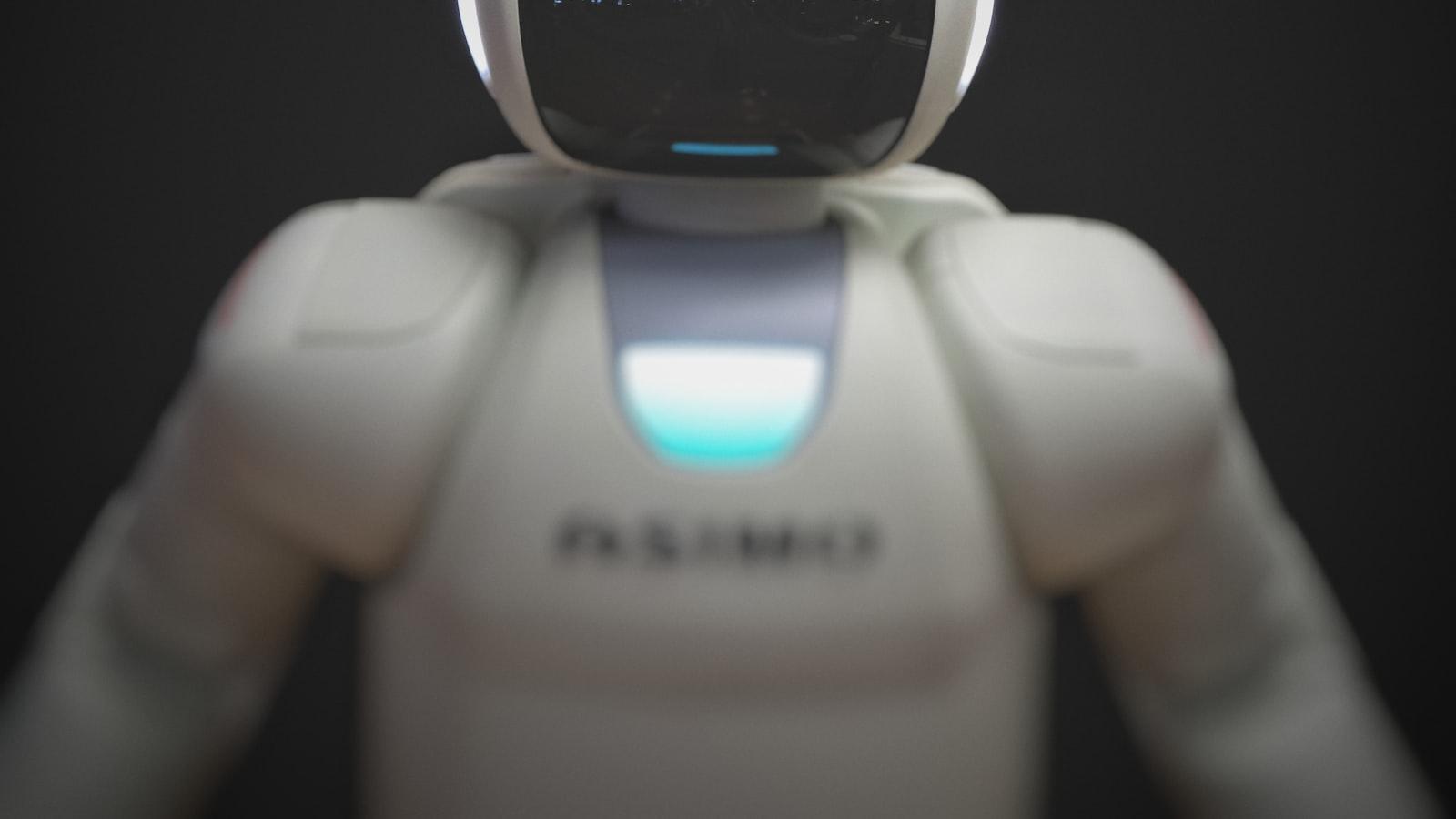Welcome to the dawn of a chilling new digital era where truth is as malleable as warm wax and deception wears the inconspicuous cloak of artificial intelligence. Amid the whirlwind of election campaigns and political jousting, an insidious new player silently annexes its influence. Picture a writer that never sleeps, a news source that tailors stories to exploit individual biases, and a master of disguise that seamlessly embeds itself in our daily digital feed. Compelling as the plot to a dystopian novel, lamentably, this is no fiction. Be vigilant, for AI-generated fake news is not just a possibility on a distant horizon, it’s a creeping vine at your doorstep – poised to entangle the next election you vote in.
Table of Contents
- Unveiling the Era of AI-Generated Fake News
- The New Battleground: Political Elections and Artificial Intelligence
- Delving into the Dark Side: The Hazards of AI-Generated Content
- Tracing the Trail: Identifying and Analysing AI-Generated News
- Conviction or Deception? The Psychological Impact of Fake News
- Cyber Shields: Strategies and Tools to Counter AI-Generated Election Propaganda
- Curating Integrity: Policies and Innovations Towards Free and Fair Elections
- In Retrospect

Unveiling the Era of AI-Generated Fake News
With the rise of artificial intelligence technology, we are now entering a new era where AI-generated fake news is becoming a significant threat to the democratic process. In the upcoming elections, voters may find themselves bombarded with misinformation, disinformation, and outright lies spread by AI algorithms.
One of the most alarming aspects of AI-generated fake news is the speed at which it can be produced and distributed. These algorithms are capable of creating countless articles, videos, and social media posts in a matter of seconds, flooding the online space with false information. This poses a serious challenge for fact-checkers and journalists who must work tirelessly to debunk these misleading narratives.
As we navigate this unprecedented landscape, it is crucial for voters to be vigilant and critical of the information they consume. Fact-checking websites and reputable news sources will play a crucial role in combating AI-generated fake news. Additionally, policymakers must work to regulate the use of AI in the dissemination of information to ensure the integrity of our democratic institutions.

The New Battleground: Political Elections and Artificial Intelligence
As political elections continue to be a hot topic of discussion across the globe, a new player has entered the arena: artificial intelligence. With the rise of AI technology, the dissemination of fake news has become more sophisticated and harder to detect. In the upcoming elections, AI-generated fake news is expected to play a significant role in shaping public opinion and influencing voter behavior.
One of the biggest challenges posed by AI-generated fake news is its ability to target specific demographics with tailored messages. By analyzing vast amounts of data, AI algorithms can create highly personalized content that is designed to resonate with individual voters. This level of micro-targeting is unprecedented in the history of political campaigning and has the potential to sway undecided voters in critical swing regions.
Moreover, the use of AI-generated fake news poses a serious threat to the integrity of democratic processes. As misinformation spreads rapidly through social media channels, it becomes increasingly difficult for voters to discern fact from fiction. In an era where trust in traditional media is at an all-time low, the proliferation of AI-generated fake news only serves to further erode public confidence in the electoral system.

Delving into the Dark Side: The Hazards of AI-Generated Content
AI-generated content has revolutionized the way we consume information, but with this innovation comes a dark side that poses a threat to the integrity of elections worldwide. As artificial intelligence technology advances, so too does the ability to create convincingly fake news articles, videos, and even social media posts. This poses a significant risk to democracy, as disinformation can sway public opinion and manipulate election outcomes.
One of the major hazards of AI-generated content is the speed at which it can be disseminated across the internet. In a matter of minutes, a fake news article generated by AI can reach millions of people, causing confusion and chaos. This rapid spread of misinformation can be difficult to combat, as platforms struggle to detect and remove fraudulent content before it influences public perception.
In addition to the speed of dissemination, the ability of AI to target specific demographics and individuals with tailored fake news further complicates the issue. By using machine learning algorithms, malicious actors can create content that is specifically designed to manipulate certain groups of people, amplifying existing biases and sowing discord within communities. This targeted manipulation can have far-reaching consequences, especially in the context of elections where voter sentiment is crucial.
Tracing the Trail: Identifying and Analysing AI-Generated News
As we inch closer to the next election cycle, a new threat looms on the horizon – AI-generated fake news. The advancements in artificial intelligence technology have paved the way for the creation of highly convincing fake news articles that are indistinguishable from real ones. These AI-generated news pieces can spread like wildfire on social media platforms, influencing public opinion and potentially shaping the outcome of elections.
Identifying and analysing AI-generated news can be a daunting task, given their sophisticated nature. However, there are several key indicators that can help in tracing the trail of these malicious articles. Some of the tell-tale signs include:
- Unverified sources
- Unusual writing style or language patterns
- Highly polarising content
It is crucial for individuals and organisations to be vigilant and proactive in combatting the spread of AI-generated fake news. By developing tools and strategies to detect and analyse these articles, we can better protect the integrity of our democratic processes and ensure that misinformation does not sway the outcome of elections.

Conviction or Deception? The Psychological Impact of Fake News
Fake news has been a growing concern in recent years, with the rise of social media and AI technology making it easier than ever to create and spread misinformation. The psychological impact of fake news is significant, as it can shape people’s beliefs, opinions, and even behavior. When individuals are exposed to false information repeatedly, they may start to believe it as true, leading to a conviction based on deception.
AI-generated fake news is a particularly worrisome development, as it can be tailored to target specific groups or individuals with personalized misinformation. This type of deception can be especially potent during election campaigns, when emotions are running high and people are more susceptible to manipulation. The psychological impact of AI-generated fake news is still being studied, but early research suggests that it can have a powerful influence on people’s perceptions and decision-making.
As we approach the upcoming election season, it’s crucial to be vigilant about the information we consume and to critically evaluate the sources of news and information. By being aware of the psychological impact of fake news and the tactics used to deceive us, we can better protect ourselves from manipulation and make informed decisions based on facts rather than fiction.

Cyber Shields: Strategies and Tools to Counter AI-Generated Election Propaganda
As the upcoming election season approaches, the threat of AI-generated fake news looms large over the political landscape. With the rapid advancement of technology, it has become easier than ever for malicious actors to create and spread disinformation at an alarming rate. In order to combat this growing problem, it is essential for campaigns and voters alike to arm themselves with cyber shields – strategies and tools designed to counter the spread of AI-generated election propaganda.
One key strategy in the fight against AI-generated fake news is to educate the public about the dangers of disinformation. By raising awareness about the prevalence of fake news and the tactics used to spread it, individuals can be better equipped to spot and report false information. Additionally, campaigns can work to debunk misinformation in real-time, providing accurate and reliable information to counteract false narratives.
Another important tool in the fight against AI-generated election propaganda is the use of AI-powered fact-checking software. These tools are designed to quickly analyze information for accuracy and flag any suspicious content for further review. By incorporating AI technology into the fact-checking process, campaigns can more effectively identify and address fake news before it has a chance to spread.

Curating Integrity: Policies and Innovations Towards Free and Fair Elections
In today’s digital age, the rise of AI-generated fake news poses a significant threat to the integrity of elections around the world. With the ability to create highly convincing and widespread misinformation, these advanced technologies have the potential to sway public opinion, manipulate voter behavior, and undermine the democratic process.
One of the biggest challenges in combating AI-generated fake news lies in identifying and addressing its source. Unlike traditional fake news, which is often spread by individuals or organizations with specific agendas, AI-generated content can be produced and disseminated by bots and algorithms at an unprecedented scale and speed. This makes it difficult for fact-checkers and platforms to keep up with the sheer volume of misinformation being generated.
To tackle this growing threat, policymakers and tech companies must work together to implement innovative solutions that safeguard the integrity of elections. This includes developing advanced algorithms to detect and flag AI-generated content, enhancing media literacy programs to help the public discern fact from fiction, and enforcing strict penalties for those who seek to manipulate the electoral process through fake news.
In Retrospect
As we journey further into the digital age, we find ourselves on the threshold of a new era, where AI-powered fake news might meddle uninvited in our electoral landscape. It’s an uncanny blend of progress and peril, innovation tainted with influence. We stand as wide-eyed observers, vigilantly anticipating the truth and untruth of tomorrow. Understand this: as much as AI drives fake news, it could equally serve as our defence mechanism. The same sword can both smite and shield. It’s just about making sure we’re holding the handle, and not the blade. Elections are too precious for anything less than full vigilance. Now, more than ever. Brace yourself, dear reader. The AI-generated fake news storm is brewing, and it could be coming to an election near you.






